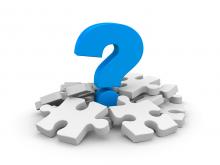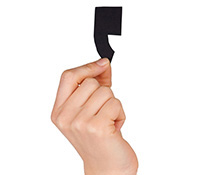
Professional Editor's Corner: Punctuation Quirks
American English most definitely possesses some punctuation quirks. We see this with questions.
Questions
1. In American English, we can ask a question without quotation marks or commas.
Is it worth the risk? he wondered.
2. We can also omit the question mark after a request in informal writing. So American English permits the following two requests.
Would you please return these books to the library?
Would you please return these books to the library.
3. We can also use entire sentences (capitalized and all) or parts of sentences as subjects, objects, or object complements.
My favorite saying is “Beggars can’t be choosers.”
The expression she used in her speech was “art in conversation.”
“My all-time favorite flower” was how Susan described the peony.
However, Canadian English is quirkier still.
For example, we can place a question mark after indirect questions, which is a serious no-no in American English.
I wonder if you could cook dinner tonight?
In Canadian English, as in American, we can omit question marks after requests.
Would you come this way, please.
Exclamation Points
Now we leave the simply quirky and enter the truly mind blowing. In Canadian English, we can put exclamation points right in the middle of a sentence if we’re using onomatopoeic words—words that represent a sound (e.g., bang, chirp, fizz, and meow).
RIGHT IN THE MIDDLE OF A SENTENCE!
Crash! went the books when the bookshelf toppled over.
We could never do that in American English.
Compare that with the following.
The crash of the books when the bookshelf toppled over was so loud I awoke.
Periods
While we’re discussing punctuation, I should note that Canadian English requires a period after titles (e.g., Mr., Ms., Mrs., and Dr.), as does American English. This is NOT true in British English.
Quotations
 I noted above that American English allows us to omit commas and quotation marks with questions and to use sentences and parts of sentences as subjects, objects, and object complements. We can do all that in Canadian English, but Canadian English takes this a step further.
I noted above that American English allows us to omit commas and quotation marks with questions and to use sentences and parts of sentences as subjects, objects, and object complements. We can do all that in Canadian English, but Canadian English takes this a step further.
The following are also permissible.
My mother reiterated, Do your homework! (No quotation marks necessary and capitalization mid-sentence allowed.)
He said “Shut up!” and ran. (No comma necessary after ‘verbs of saying.’)
As in American English, we put commas and periods inside quotation marks whether or not the original author included them in the actual quote.
Original: Literature is protest, is it not?
Quote: “Literature is protest.”
Also, as in American English, we place ending question marks inside quotations if they apply to the quote only and outside if they apply to the entire sentence.
Shouldn’t we stop complaining “I’m hungry”?
All she said during the trip was “Are we there yet?”
Note: If a question mark belongs inside the quote AND outside the quote (if we have a question within a question), we use only one question mark and place it INSIDE.
Isn’t it time we stopped asking “When can we open our Christmas presents?”
Ellipses
In American English, we generally put a space before, after, and in between ellipses indicating omitted words. In Canadian English, we can use spaces before, after, and in between or NONE.
Original: Interviews, despite being disparaged for their subjective nature, serve as helpful research tools.
American/Canadian: “Interviews . . . serve as helpful research tools.”
Canadian only: “Interviews...serve as helpful research tools.”
Additionally, as in American English, use four dots if the preceding part is a full sentence.
American/Canadian: “Interviews, despite being disparaged for their subjective nature, serve as helpful research tools. . . . Most researchers assert that open-ended questions are the most effective.”
